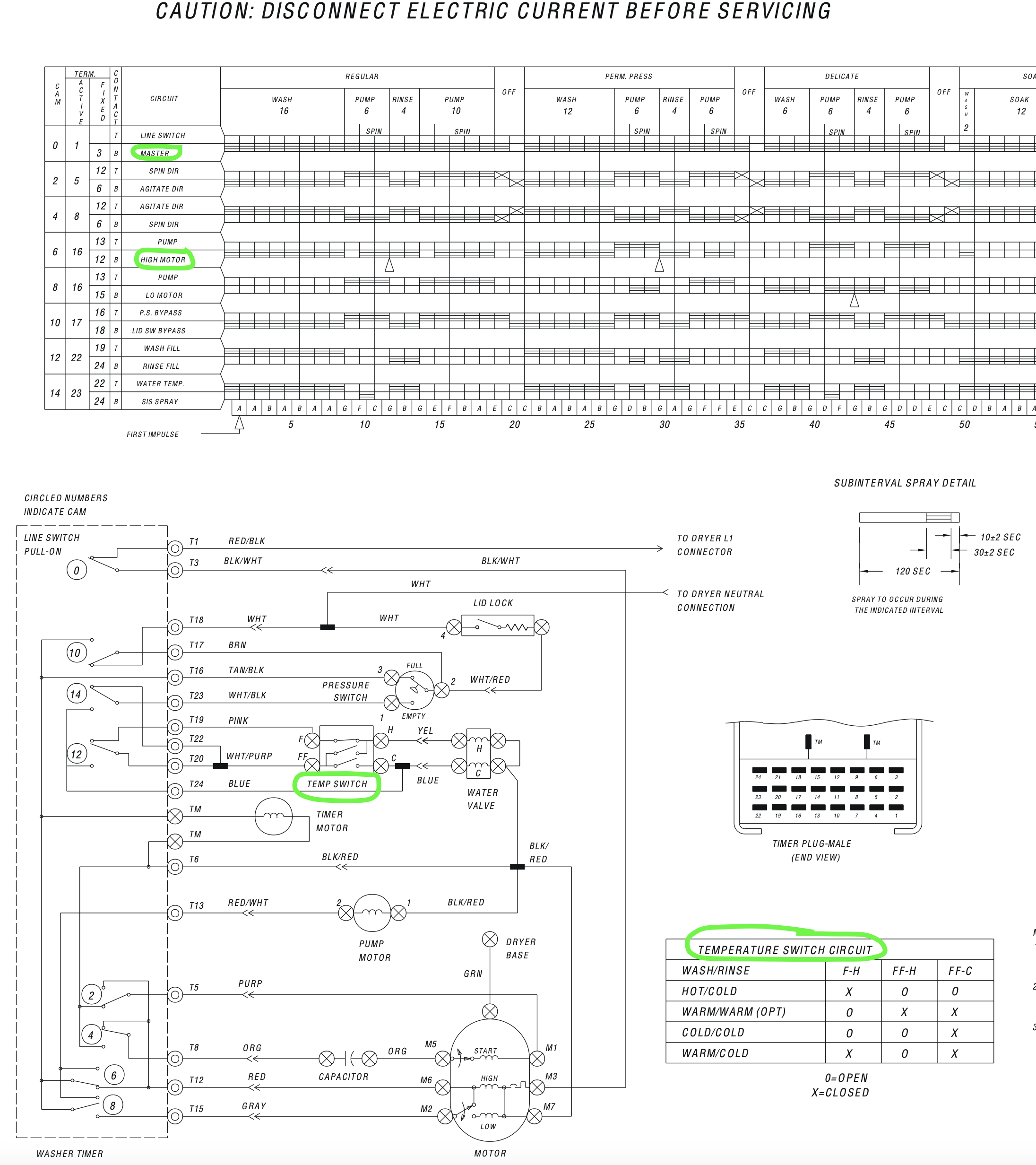Forum Replies Created
-
AuthorPosts
-
Hi Mohammed,
Understanding equivalent resistance is a key part of understanding parallel circuits/loads and how they function differently than when loads are in series.
Many loads are in parallel with each other. Here’s an example in a refrigerator.

If you measured the resistance from Pin 13 to Pin 7 and got 40-something ohms, you might not know how to interpret that reading. But understanding Equivalent Resistance would let you know that you would expect to read something less than 58.
Hi Daniel – please check your email – I just sent you a note.
Yes, and when that little screen (filter) on the valve has become clogged, you don’t want to try to clean it out – just replace the whole thing. You risk pushing the grit further into the valve when you try to just clean off the screen.
Hi Michael,
The Fluke we are showing there is the one that the Samurai happens to have and use. It has been a great one.
Appliance techs don’t need a whole lot of fancy stuff, but the main feature you want to make sure your meter has (in addition to the usual items) is a LoZ function.
~ Susan
Hi Terrance,
The correct answer is, “This is not a valid measurement”. Remember that DC voltage has to be measured wrt DC ground, not chassis ground or neutral.
You are right about the Main being shunted. Are the ignitor and booster in series with each other or in parallel?
Hi Tyler,
The main problem with your answer for Part 2 is saying that L2 is faulty. That is not what the measurements in Figure 2 on the Midterm show. Also, remember that we tell you in the problem statement that the diagram is not a complete one – there could be a switch or other component that is causing the problem. We just want you to describe what you can conclude based on the info you have.
If the bulb is blown, then the circuit is open and there will be no current flow.
It’s a little hard to discuss without seeing a diagram. A shunt is usually created by a switch that closes, so I’m not sure where the switch is in your scenario. When you say the light is “out” – do you just mean that it is off (not lit), or that it has blown?
In parallel circuits, each circuit has independent access to the power supply. Remember my goofy little drawing in Unit 5 showing the “Zen trick” of becoming the load and reaching out to L1 and N? So if one circuit fails open, only that circuit is affected. The other circuits in parallel with it will still have their 120v (or 240v if an L1-L2 circuit)
I have no idea how that is happening. No wonder you were frustrated. I’m sending you a copy of the tech sheet via email right now. If you can email me what you pulled up, I would appreciate it. Either download and attach it to an email, or send a screenshot.
The items I’ve talked about are circled in green. Is this the sheet you’ve been looking at?

Yes, although a shunt is a path of NO resistance, not just least. We discussed this in the Basic Electricity Module of Core (Unit 5).
This is how we explain this particular circuit in the unit:
Think “shunt.” The two orange L1 lines may look like parallel branches of a circuit, but look at the bottom one. It is just a series of closed switches from the beginning of L1 until it reaches the heater; in other words, it’s electrically just like a wire. It is a shunt – all the current will flow through that branch and zero will flow through the branch with loads (timer motor, resistor).
The answers to 4 and 6 come from the timer chart at the top of the page. You find the item you are looking for in the column labeled “Circuit”, then look to the left to see the Cam and Terminal numbers
4. Which timer cam and contacts must be made in order for anything else in the washer to get power?
Circuit: “Master”Question #6 – Which timer cam and contacts must be made for the washer motor to run in high speed mode?
Circuit: “High Motor”These units are called “Schematic Exercises” because they are designed for you to practice on them. They aren’t the type of quizzes where we are testing you to repeat information that we taught. On these you have to stretch yourself and apply the basics that we’ve taught. If you get stuck, just ask us – we’re happy to help. You might just have to wait a little bit for the answer.
Let me know if what I wrote to you makes things clear, or do you still have questions?
Hi Thomas,
Hang in there! It’s a crazy day here for Team Samurai, so we couldn’t respond immediately.There is a lot to look at on these tech sheets, and it can take some time to find what you need. That’s why we have you practice.
2. Which contacts on the temperature selection switch need to be closed to select warm wash and warm rinse?
This answer comes directly from the table labeled, “TEMPERATURE SWITCH CIRCUIT”. The row labeled “warm/warm” shows you which contacts must be closed.BTW, the switch is labeled “Temp Switch” on the washer schematic.
I’ll follow up with more in a moment.
-
This reply was modified 1 year, 8 months ago by
 Susan Brown.
Susan Brown.
-
This reply was modified 1 year, 8 months ago by
-
AuthorPosts